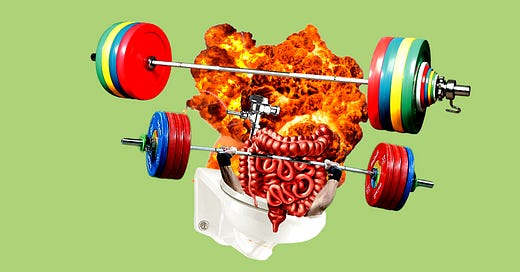The Work of the World's Strongest Men
No one talks about powerlifters’ epic poop problems — but aside from winning, it’s all they’re thinking about
This piece, written a little less than a half-decade ago for the now-defunct MEL Magazine, is among the more fun features in my back catalogue. Having spent many years consuming mass quantities for recreational as…
Keep reading with a 7-day free trial
Subscribe to Oliver Bateman Does the Work to keep reading this post and get 7 days of free access to the full post archives.




